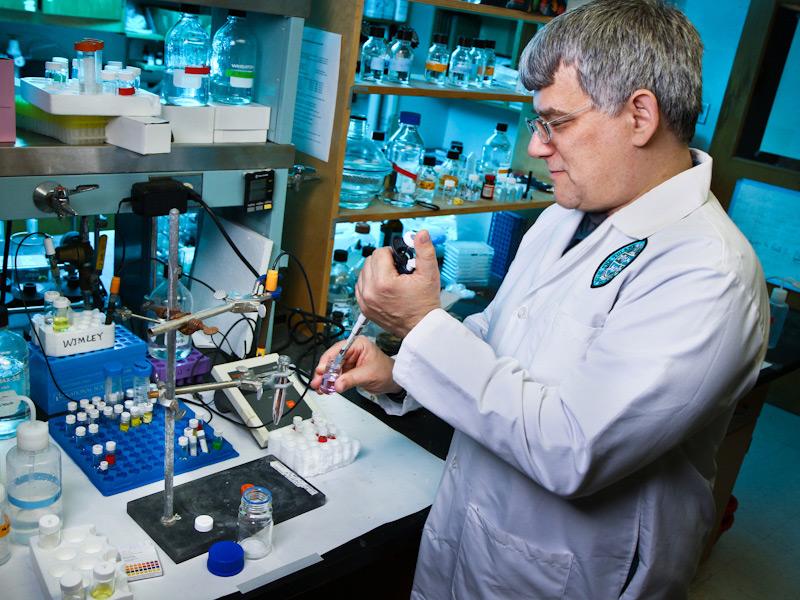Tulane receives $1.6 million to develop nanoscale drug delivery
Creating holes in a cell is usually a bad thing, but researchers at Tulane have received a grant to study how they might create controlled nanopores as small as a molecule to deliver targeted medicine into cells.
Bill Wimley, the George A. Adrouny, PhD Professor in Biochemistry in the Department of Biochemistry and Molecular Biology in the Tulane School of Medicine, has been awarded a grant of $1.6 million from the National Institute of General Medical Studies to study nanopore technology.
This research uses a compound derived from melittin, a main component of honeybee venom, to make small pores in membranes. These pores are on the nanometer scale, hence the name “nanopores.”
“This peptide, melittin, it permeabilizes membranes and causes nonspecific damage to cells that way,” said Wimley, “so we took melittin and evolved it over multiple generations into peptides that are controllable, more useful and less toxic.”
These evolved peptides, which are short chains of amino acids, are not controlled by a remote or any electronics but by the pH, or acidity, of their environment. One family of these nanopore-forming peptides is triggered by an acidic environment.
“They are designed not to affect cells under normal conditions,” Wimley said.
They are triggered when endosomes, which take up material from the outside of cells, mature and acidify. It is only in that acidic environment that the peptides form nanopores in the cell membrane.
Nanopores allow for macromolecules, molecules too large to move through cell membranes under normal circumstances, to have a way into cells. This research could lead to breakthroughs in medicine delivery. This current grant, however, is looking at the more basic structural level of understanding of the technology. As Wimley put it, “What drives these very unusual nanopores to form in membranes?”
In order to learn more about these nanopores, Wimley and his team will start with computer simulations of their evolved peptides, then they will move toward laboratory testing in order to see what makes the peptides behave the way they do. Once they understand that, then more research can be done into potential life-saving applications.
The patent for this nanopore technology is shared between Tulane and Johns Hopkins University. Wimley will be working on this research with an international team that includes researchers in Romania and at Johns Hopkins.

